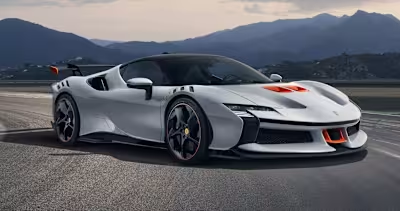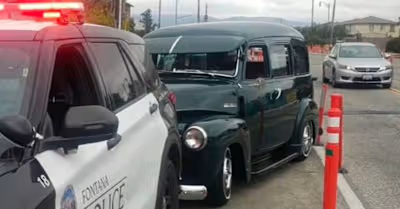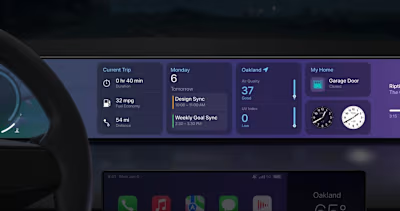Why The All-New Air-Cooled Singer 911 Type 964 Is Awesome
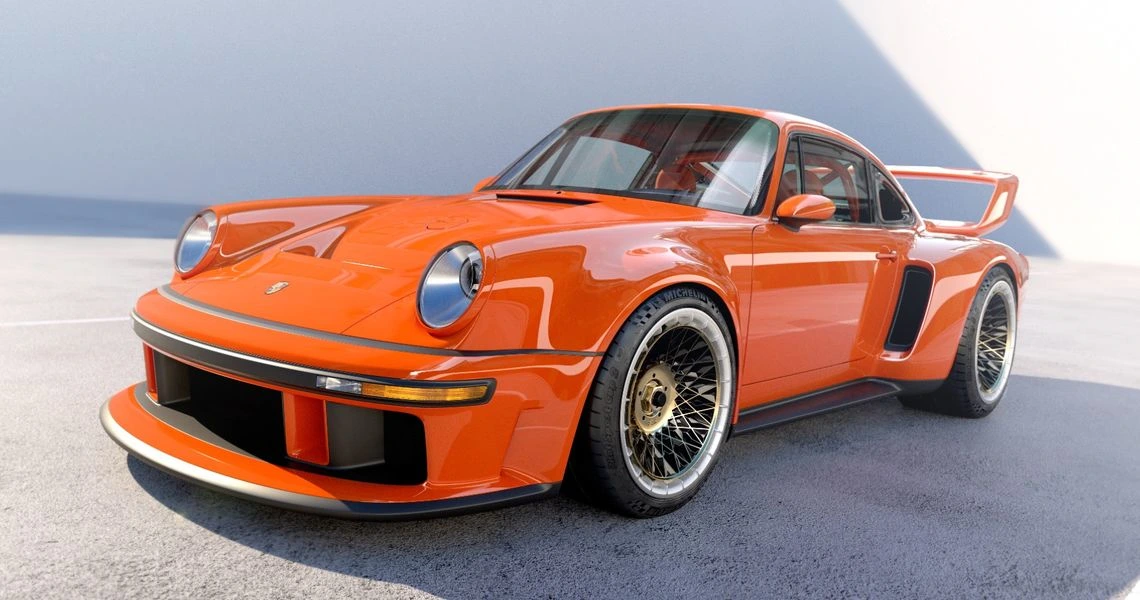
Singer
Singer has done it again. The California-based luxury specialist is renowned for its exceptional craftsmanship and stunning work with Porsche 911 models. Their work often blends design elements from different generations, transforming these cherished classic sports cars into contemporary masterpieces.
For their latest endeavor, Singer has introduced two impressive DLS Turbo variants of a reimagined Porsche 911 Type 964. These creations draw inspiration from the endurance racing prowess of the iconic Porsche 934/5.
The highly coveted air-cooled 964 is already a great generation to start with. Combining it with the triumphant endurance racers from the late 1970s is a remarkable undertaking. Singer’s latest project, known as the Dynamics & Lightweighting Study Turbo (DLS Turbo), combines the best of both worlds.
Each car is meticulously tailored to the desires of Singer’s clients, whether they prefer road or track-focused driving. It all comes together for an incredible fusion of personalization and performance.
The DLS Turbo Reinterprets A 1970s Legend
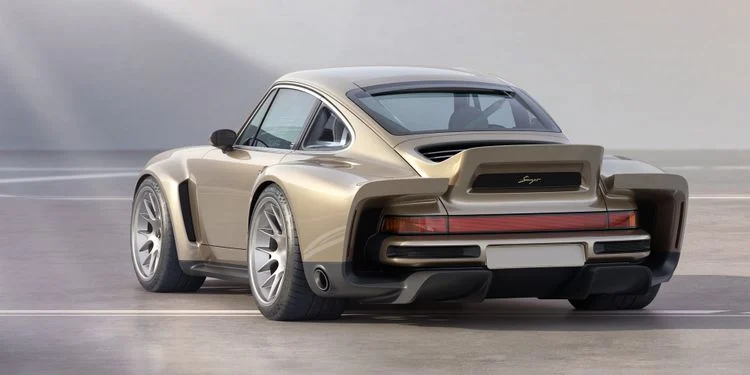
Singer
When it comes to taking on new projects, Singer values customer input above all else. But by the company’s own admission, they only embark on a project if it’s something they themselves would be eager to own. The latest evolution of the Dynamics & Lightweighting Study is a testament to that philosophy. In response to client requests, Singer has skillfully incorporated turbocharging into the equation, resulting in the DLS Turbo.
The two DLS Turbo cars crafted by Singer are a reflection of the bold styling of the iconic Porsche 934/5. Singer paid close attention to detail to capture the essence of that 1970s era. One particular characteristic that required careful attention was the short 930-style hood.
However, the real test lay in successfully blending the ‘70s flavor with the ‘90s Type 964, while also incorporating elements from the 934/5 into not just one, but two different configurations that could be easily interchanged. Some owners opt for a restoration that can unleash its full potential on the track, while others prefer one that is tailored for an exhilarating road experience.
The Blood Orange car has been prioritized for the track. This version features wide fenders and a large front splitter which has been engineered to enhance cooling performance. Enlarged rear intakes and NACA ducts help brake and turbocharger cooling. The car is also equipped with a high-downforce rear wing that features an adjustable upper element.
For Porsche enthusiasts who want the same performance with a more understated appearance, Singer has created a road-focused version of the DLS Turbo, exemplified in a Moet Blanc color. This variant features a classic ducktail spoiler instead of the towering rear wing. At the front, it features a more subtle front splitter.
For those who find themselves torn between the two versions, Singer offers a solution that accommodates both configurations. The front fascia and rear decklid assembly can easily be removed and switched on this variant, enabling owners to choose between the track-focused and road-focused aesthetics. This approach gives owners the freedom to personalize their driving experience to the fullest extent.
The Type 965 Is Powered By A Unique Engine
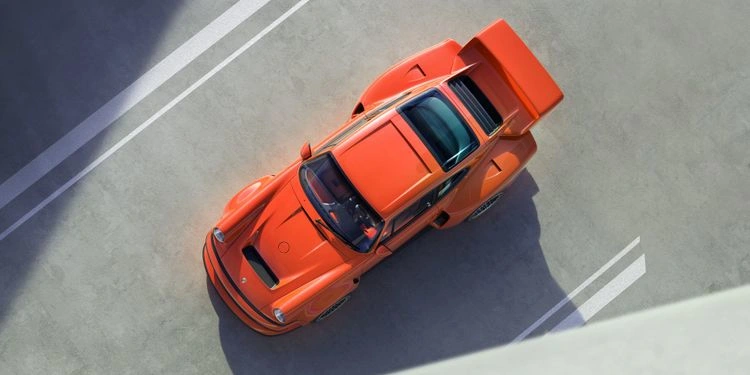
Singer
When it comes to Singer’s restoration and modification process, it all starts with the engine of the owner’s Type 964 Porsche 911. The engine is disassembled down to the block. It undergoes a complete restoration that involves the inclusion of high-performance components and a few strategic modifications. These enhancements optimize the engine’s capabilities.
The DLS restorations are powered by a unique 3.8-liter flat-six with 4 valves per cylinder. Equipped with twin turbochargers, featuring electric wastegates, air-to-water intercooling, and an electrically powered fan, this engine sets the stage for exhilarating power delivery. Power outputs exceed 700 horsepower at more than 9,000 rpm.
The DLS models feature a six-speed manual gearbox that directs all the force to the rear wheels. To complement the immense power, these models feature upgraded track-focused suspension components with bespoke dampers and remote adjustment.
To bring the DLS to a commanding halt, powerful ceramic discs are paired with lightweight monobloc calipers. This combination offers exceptional stopping power and heat dissipation, making them equally suitable for both road and track use.
Wrapping it all up are Michelin Pilot Sport Cup 2 or Cup 2R tires mounted on lightweight forged magnesium center-lock wheels. The front wheels measure 19 inches, while the rears are 20 inches.
Singer Upgrades Each 911 Down To The Chassis
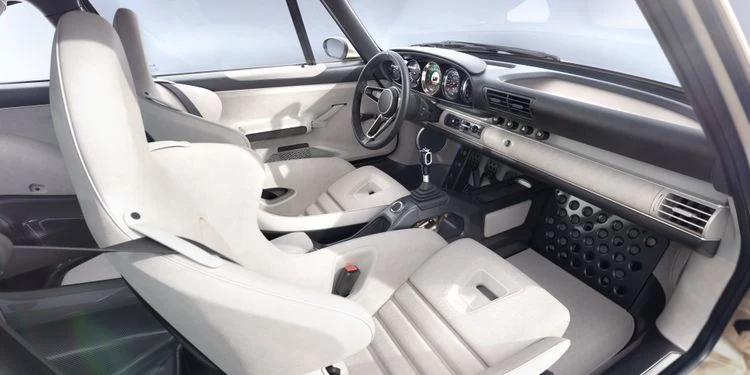
Singer
Singer also employs a painstaking process when it comes to restoring and modifying the car’s interior, exterior, and chassis. The company’s services offer owners the opportunity to truly make their car their own, inside and out. A wide range of material finishes are available, as well as bespoke paint and leather options.
The owner’s car is first disassembled. This includes removing the interior, exterior bodywork, and all mechanical parts until only the steel monocoque chassis remains. With the bare chassis revealed, it is meticulously inspected for a complete and comprehensive assessment. The chassis is then carefully cleaned, strengthened, and prepared for the next stages of the restoration.
Singer uses modified carbon fiber bodywork, which reduces weight and enhances stiffness. The shape of the bodywork is not just visually striking, but also optimized for aerodynamic performance using computational fluid dynamics, or CFD.
Each DLS Turbo is meticulously crafted to the owner’s unique specifications. This means that pricing can vary significantly depending on the desired features and personalized touches.
Only a limited number of these restorations will be commissioned. For those eager to witness the stunning results of Singer’s restoration and modification firsthand, they will be at the Goodwood Festival of Speed in the UK from July 13-16, or at Car Week in the Monterey Peninsula of Northern California in August of this year.
How The Porsche 934/5 Made History

Bill Abbott via Wikimedia
To fully appreciate the details of Singer’s latest masterpiece, we need to take a journey back in time to 1977. This year saw the introduction of the Porsche 934/5. This purpose-built machine was created as a hybrid of the Porsche 934 and Porsche 935, combining the best elements of both to compete in the Racing Group 4 category of the International Motor Sport Association, or IMSA.
By combining the chassis and engine of the 934 with the wheels, tires, and rear wing configuration of the 935, the 934/5 was born.
Just as it was poised to make its debut on the track, IMSA delivered an unfortunate blow by banning the 934/5 before it could even compete. The designers of the 934/5 refused to let their creation go to waste.
Instead, they made the decision to enter their machine in the rival SCCA Trans Am Series. The move paid off handsomely, as the Porsche 934/5 emerged victorious in 6 out of the 8 races it participated in. IMSA’s ban couldn’t kill the 934/5 and it ultimately cemented its status as an endurance race legend.
Like this project
Posted Aug 4, 2023
Each car is meticulously tailored to the desires of Singer’s clients, whether they prefer road or track-focused driving.
Likes
0
Views
22
Featured on





